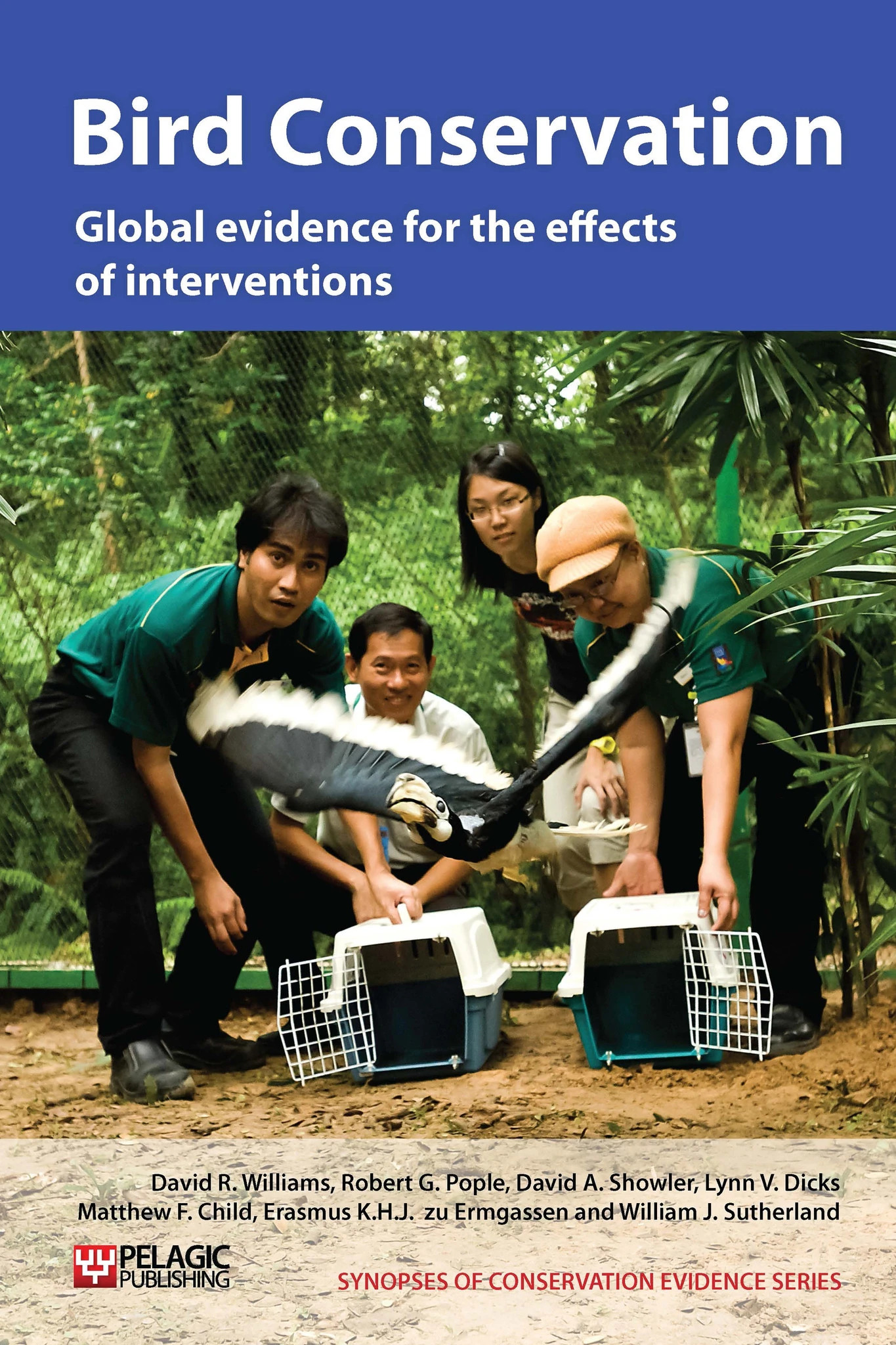Actions to conserve biodiversity
We have summarised evidence from the scientific literature about the effects of actions to conserve wildlife and ecosystems.
Review the evidence from the studies
Not sure what Actions are? Read a brief description.
Search for evidence
e.g. "frogs chytrid"
454 Actions found
Refine
Hide
454 Actions found
Download Actions
| 0 selected |
|
Order results by:
| Action | Effectiveness | Studies | Category | |
|---|---|---|---|---|
|
Use bait throwers to reduce seabird bycatch Action Link |
Unknown effectiveness (limited evidence) | 1 |
|
|
|
Dye baits to reduce seabird bycatch Action Link |
Unknown effectiveness (limited evidence) | 1 |
|
|
|
Use a sonic scarer when setting longlines to reduce seabird bycatch Action Link |
Unknown effectiveness (limited evidence) | 1 |
|
|
|
Thaw bait before setting lines to reduce seabird bycatch Action Link |
Unknown effectiveness (limited evidence) | 1 |
|
|
|
Use acoustic alerts on gillnets to reduce seabird bycatch Action Link |
Unknown effectiveness (limited evidence) | 1 |
|
|
|
Use bird exclusion devices (BEDs) such as ‘Brickle curtains’ to reduce seabird mortality when hauling longlines Action Link |
Unknown effectiveness (limited evidence) | 1 |
|
|
|
Use high-visibility mesh on gillnets to reduce seabird bycatch Action Link |
Unknown effectiveness (limited evidence) | 1 |
|
|
|
Mark trawler warp cables to reduce seabird collisions Action Link |
Likely to be beneficial | 1 |
|
|
|
Use voluntary agreements with local people to reduce disturbance Action Link |
Likely to be beneficial | 1 |
|
|
|
Start educational programmes for personal watercraft owners Action Link |
Likely to be beneficial | 1 |
|
|
|
Habituate birds to human visitors Action Link |
Unknown effectiveness (limited evidence) | 1 |
|
|
|
Use nest covers to reduce the impact of research on predation of ground-nesting seabirds Action Link |
Unknown effectiveness (limited evidence) | 1 |
|
|
|
Use variable retention management during forestry operations Action Link |
Unknown effectiveness (limited evidence) | 1 |
|
|
|
Use shelterwood cutting instead of clearcutting Action Link |
Unknown effectiveness (limited evidence) | 1 |
|
|
|
Remove midstorey from savannas Action Link |
Unknown effectiveness (limited evidence) | 1 |
|
|
|
Replace non-native species of tree/shrub Action Link |
Unknown effectiveness (limited evidence) | 1 |
|
|
|
Add woody debris to forests Action Link |
Unknown effectiveness (limited evidence) | 1 |
|
|
|
Use greentree reservoir management Action Link |
Unknown effectiveness (limited evidence) | 1 |
|
|
|
Restore or create kelp forests Action Link |
Unknown effectiveness (limited evidence) | 1 |
|
|
|
Restore or create lagoons Action Link |
Unknown effectiveness (limited evidence) | 1 |
|
|
|
Control mammalian predators on islands for wildfowl Action Link |
Awaiting assessment | 1 |
|
|
|
Control mammalian predators on islands for gamebirds Action Link |
Awaiting assessment | 1 |
|
|
|
Control mammalian predators on islands for raptors Action Link |
Awaiting assessment | 1 |
|
|
|
Control predators not on islands Action Link |
Evidence not assessed | 1 |
|
|
|
Control predators not on islands for rails Action Link |
Awaiting assessment | 1 |
|
Download Actions
| 0 selected |
|

Bird Conservation - Published 2013
Bird Synopsis
Watch this search
If you are familiar with RSS feeds, please click the button below to retrieve the feed URL:
RSS feed for this searchIf you are unfamiliar with RSS feeds, we would suggest reading this BBC article.
Unfortunately, due to the number of feeds we have available, we cannot provide e-mail updates. However, you could use tools such as Feed My Inbox to do this for you.
What are 'Individual studies' and 'Actions'?
Individual studies
An individual study is a summary of a specific scientific study, usually taken from a scientific journal, but also from other resources such as reports. It tells you the background context, the action(s) taken and their consequences.
If you want more detail please look at the original reference.
Actions
Each action page focuses on a particular action you could take to benefit wildlife or ecosystems.
It contains brief (150-200 word) descriptions of relevant studies (context, action(s) taken and their consequences) and one or more key messages.
Key messages show the extent and main conclusions of the available evidence. Using links within key messages, you can look at the paragraphs describing each study to get more detail. Each paragraph allows you to assess the quality of the evidence and how relevant it is to your situation.
Where we found no evidence, we have been unable to assess whether or not an intervention is effective or has any harmful impacts.





)_2023.JPG)














